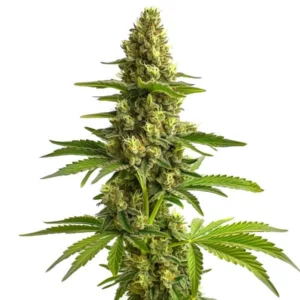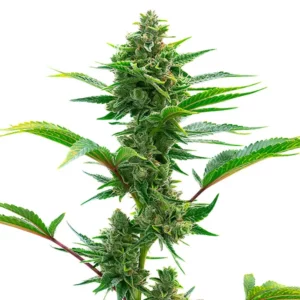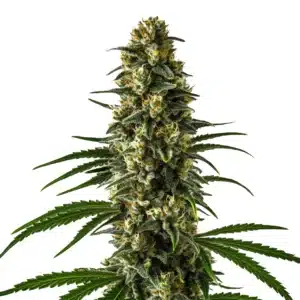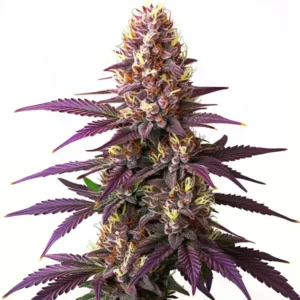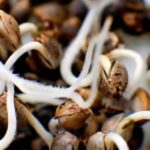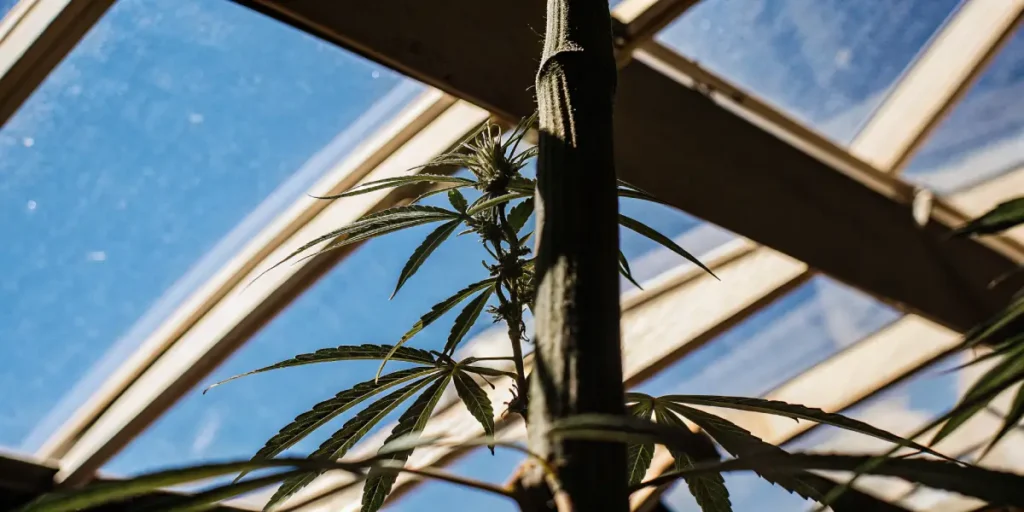
What are Articulated Laticifers in Cannabis?
Articulated laticifers in cannabis are specialized structures found in the plant’s anatomy. They are a network of tubes that play a crucial part in the plant’s life. Typically, these structures are involved in the production and storage of latex, a milky fluid. In the context of cannabis, knowing these structures helps growers optimize their cultivation techniques. But many cultivators also ask, What are non-articulated laticifers in cannabis? These are a different type of laticifer that, unlike articulated ones, consist of single elongated cells rather than a connected tube network, influencing how latex and related compounds are stored within the plant.
These laticifers are not unique to cannabis. They are present in many plant species. However, their function in cannabis is particularly intriguing due to the plant’s unique properties. The function of articulated laticifers in cannabis plants involves complex biological processes. They contribute to the overall health and potency of the plant, impacting its growth and quality of the final product.
Recommended Strains
Bruce Banner #3
|
|
THC | 20% - 29% (High) |
|
|
Type | Feminized |
|
|
Yield | Medium |
|
|
Phenotype | 50% Indica / 50% Sativa |
Sour Diesel
|
|
THC | 22% - 25% (Medium) |
|
|
Type | Feminized |
|
|
Yield | High |
|
|
Phenotype | 30% Indica / 70% Sativa |
The significance of articulated laticifers in cannabis biology extends beyond simple latex production. They influence how the plant responds to environmental stresses and pests. By knowing how articulated laticifers affect cannabis potency, growers can implement strategies to enhance the quality and yield of their crops.
Function of Articulated Laticifers in Cannabis
Articulated laticifers in cannabis function primarily as a defense mechanism. They produce and store latex, which can deter herbivores due to its sticky nature and bitter taste. This makes the plant less appealing to pests, thereby protecting it from damage. The presence of these structures ensures the plant’s resilience in its natural habitat.
Moreover, these structures might play a role in the plant’s healing process. When a cannabis plant is injured, the latex can seal the wound, preventing infections. This is crucial for maintaining the plant’s health and ensuring continuous growth. The cannabis articulated laticifers impact on growth is thus significant, as they contribute to the plant’s ability to thrive in various conditions. For growers wondering, What are non-articulated laticifers in cannabis?, these are another type of laticifer structure that can influence plant resilience and overall development.
Besides to their defensive capabilities, articulated laticifers in cannabis function as a vital support system for nutrient distribution. They facilitate the movement of essential compounds throughout the plant, ensuring each part receives what it needs for optimal growth. This internal network is a key factor in the plant’s overall health and productivity.
Knowing the articulated laticifers in cannabis function allows growers to enhance the plant’s internal systems. By focusing on the health of these structures, cultivators can improve the plant’s resilience and ability to produce high-quality yields. This knowledge is particularly useful for those aiming to maximize the benefits of strains with high potency and robust growth characteristics.
Impact on Cannabis Potency
The question of how articulated laticifers affect cannabis potency is an intriguing one. While these structures primarily deal with latex, their overall impact on the plant’s health indirectly influences potency. Healthy plants tend to produce more potent flowers, rich in cannabinoids. This is why understanding plant anatomy, including knowing the answer to What are non-articulated laticifers in cannabis?, can help in optimizing cultivation practices for better yields.
Growers often focus on factors like light, nutrients, and water. However, the internal structures of the plant, like laticifers, also play a role. By ensuring these structures are functioning optimally, cultivators can enhance the quality of their harvest. This makes a profound difference, especially when producing high-potency strains like those available at Blimburn Seeds.
Articulated laticifers in cannabis can indirectly impact potency by contributing to the plant’s stress management. Healthier plants that can effectively manage environmental stressors often have more energy and resources to allocate towards producing potent flowers. This emphasizes the importance of maintaining the health of these internal structures.
Knowing how articulated laticifers affect cannabis potency can guide growers in refining their cultivation techniques. By supporting the plant’s internal systems, including laticifers, growers can ensure that the plant reaches its full potential in cannabinoid production. This approach is essential for achieving high-quality yields with superior potency.
Promos & Deals
Significance in Cannabis Biology
The significance of articulated laticifers in cannabis biology extends beyond basic plant health. These structures are part of a complex system that helps the plant manage resources effectively. They are involved in the transport of nutrients and compounds within the plant, ensuring that each part of the plant receives what it needs to grow.
Healthy articulated laticifers contribute to the plant’s overall stability and durability. This is particularly important for strains grown in challenging environments. Strains like Bruce Banner 3 thrive when these internal systems are functioning well, resulting in robust plants that can withstand stressors.
Articulated laticifers play a crucial role in the plant’s defense strategy, contributing to its ability to withstand biotic and abiotic stress. By knowing the significance of articulated laticifers in cannabis biology, growers can develop strategies to enhance the plant’s natural defenses and increase its resilience.
Furthermore, the function of articulated laticifers in cannabis plants includes supporting overall plant vigor. This ensures that the plant can sustain healthy growth and development, leading to higher yields. Recognizing the importance of these structures is key for cultivators aiming to optimize plant health and maximize the potential of their crops.
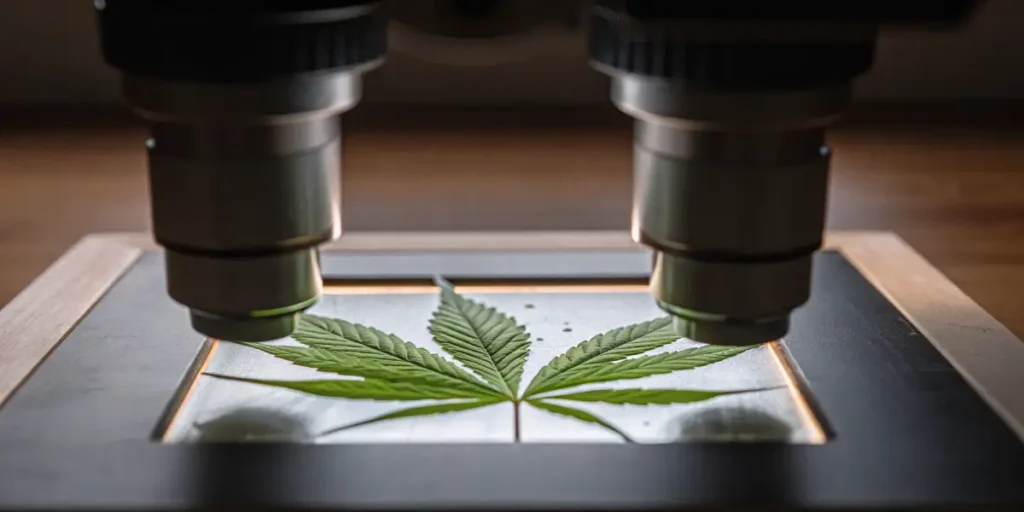
Articulated Laticifers and Plant Growth
The function of articulated laticifers in cannabis plants is crucial for growth. They ensure that the plant can transport essential compounds efficiently. This internal transport system supports growth by delivering nutrients and other vital substances where they are needed most. Growers often ask, What are non-articulated laticifers in cannabis? These are a different type of laticifer cell structure that, unlike articulated laticifers, consist of long, continuous cells that can influence how compounds are stored and transported within the plant. The result is a healthy, thriving plant capable of producing high-quality yields.
In practice, this means that growers should pay attention to the health of these structures. Regular monitoring and maintenance can lead to better growth outcomes. For example, ensuring proper hydration and nutrient levels supports these internal systems. Strains like Sour Diesel benefit from this approach, resulting in impressive growth and potency.
The cannabis articulated laticifers impact on growth is evident in how well the plant can sustain its metabolic functions. These structures facilitate the efficient allocation of resources, allowing the plant to direct energy towards growth and reproduction. This is particularly vital for achieving robust plants with high-quality yields.
By knowing the function of articulated laticifers in cannabis plants, growers can implement targeted strategies to support plant development. Ensuring the health of these structures through proper cultivation practices can lead to significant improvements in growth rates and overall plant vigor, resulting in more successful harvests.
FAQs
What are articulated laticifers in cannabis?
Articulated laticifers in cannabis are specialized tube-like structures within the plant. They are involved in the production and storage of latex, which serves various functions, including defense against herbivores. These structures play a crucial role in the plant’s overall health and are an essential part of its biological makeup. While articulated types are well-known, many growers also ask, What are non-articulated laticifers in cannabis? These are single, elongated cells that perform similar functions without forming interconnected tubes, contributing to the plant’s defense and metabolic processes.
In cannabis, these laticifers help in enhancing the plant’s resilience and ability to cope with environmental stresses. They contribute to the plant’s growth and potency by maintaining internal health. This makes them a significant factor for growers to consider when aiming for high-quality yields.
The question, “What are articulated laticifers in cannabis?” is pivotal for growers looking to optimize their cultivation processes. These structures not only contribute to the plant’s defense but also play a significant role in its biological systems, aiding in optimal growth and development.
Recognizing the importance of articulated laticifers in cannabis biology helps cultivators understand the intricate systems within the plant. This knowing is essential for developing strategies that support plant health and improve yield quality, making them a critical consideration in cannabis cultivation.
How do articulated laticifers affect cannabis potency?
While articulated laticifers themselves do not directly impact the potency of cannabis, their overall contribution to plant health does. Healthy and resilient plants tend to produce more potent flowers, rich in cannabinoids. By supporting the health of these structures, growers can indirectly influence the potency of their crop.
Knowing the function of these structures helps in creating optimal growing conditions. When the plant’s internal systems are functioning well, it can allocate more resources to producing potent flowers. This is why focusing on the health of articulated laticifers can be beneficial for growers looking to maximize the potency of strains like Girl Scout Cookies or Bruce Banner 3.
Articulated laticifers in cannabis provide critical support to the plant’s internal health, indirectly supporting the potency of its flowers. By ensuring these structures are in optimal condition, growers can create an environment conducive to the production of high-cannabinoid content.
The relationship between the health of articulated laticifers and how articulated laticifers affect cannabis potency is an area of growing interest. By fostering robust internal systems, cultivators can enhance the overall quality of their cannabis, leading to more successful and potent harvests.
What is the function of articulated laticifers in cannabis plants?
The function of articulated laticifers in cannabis plants is multifaceted. They are primarily involved in latex production, which serves as a defense mechanism against pests. Additionally, they contribute to the plant’s ability to heal and protect itself from environmental damages, ensuring continuous growth and development.
These structures also facilitate the transport of nutrients and compounds within the plant. This internal distribution system is vital for the overall health and growth of the plant. By knowing their role, growers can implement practices that support these functions, leading to healthier plants and better yields.
The articulated laticifers in cannabis function as a vital part of the plant’s survival strategy, aiding in both protection and resource allocation. Their presence ensures that the plant can manage its resources effectively, contributing to overall plant health and resilience.
Recognizing the function of articulated laticifers in cannabis plants allows growers to optimize their practices for improved plant health. By supporting these structures, cultivators can enhance the plant’s ability to withstand environmental challenges and produce high-quality yields.
What is the significance of articulated laticifers in cannabis biology?
The significance of articulated laticifers in cannabis biology is profound. They are integral to the plant’s defense system and internal transportation network. Their presence ensures that the plant can manage resources effectively, contributing to its stability and resilience.
For cannabis cultivators, recognizing the importance of these structures is key to optimizing growth conditions. By supporting the health of articulated laticifers, growers can enhance the overall quality and yield of their crops, making a noticeable difference in the final product.
The significance of articulated laticifers in cannabis biology lies in their ability to support the plant’s structural integrity and defense. By facilitating nutrient transport and defense, these structures play a crucial role in the plant’s success and productivity.
Knowing the significance of articulated laticifers allows growers to implement targeted strategies that support the plant’s internal systems. This knowledge is essential for optimizing cultivation conditions and achieving superior yields, particularly in challenging growing environments.
How do articulated laticifers impact cannabis growth?
Articulated laticifers impact cannabis growth by ensuring the plant’s internal systems function optimally. They facilitate the movement of essential nutrients and compounds throughout the plant, supporting healthy and robust growth. This makes them a critical component of the plant’s ability to develop and thrive.
By maintaining the health of these structures, growers can ensure that their cannabis plants grow efficiently and produce high-quality yields. This is particularly important for strains grown in challenging conditions, where internal support systems like laticifers play a crucial role in the plant’s success.
The cannabis articulated laticifers impact on growth is evident in the plant’s ability to effectively allocate resources for development. These structures help maintain the plant’s internal balance, supporting vigorous growth and high-yield potential.
By focusing on the health of articulated laticifers, growers can enhance the plant’s growth capabilities. This involves ensuring optimal growing conditions that support these structures, ultimately leading to more successful harvests and higher-quality cannabis products.


